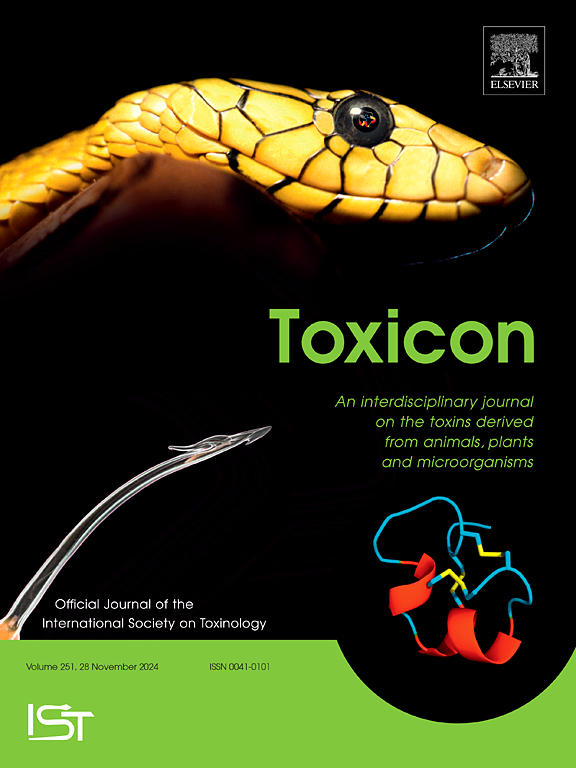Baicalin alleviates lipid accumulation in adipocytes via inducing metabolic reprogramming and targeting Adenosine A1 receptor
IF 2.6
4区 医学
Q2 PHARMACOLOGY & PHARMACY
引用次数: 0
Abstract
Excessive lipid accumulation can lead to obesity, metabolic-associated fatty liver disease, and type 2 diabetes. However, there are currently few drugs that could effectively and safely inhibit the accumulation of intracellular lipids. In this study, we observed that baicalin significantly altered cellular respiration by reducing mitochondrial oxygen consumption while enhancing glycolytic flux, accompanied by increased phosphorylation of AMPK and ACC, suggesting an adaptation to altered energy availability. Baicalin effectively reduced lipid droplet formation and intracellular triglyceride levels in adipocytes, as marked by downregulating genes and proteins associated with lipid storage, including Cd36, Fabp4, and FASN. Transcriptomic analysis identified 2150 differentially expressed genes in baicalin-treated adipocytes, with significant enrichment in metabolic pathways such as glycolysis, gluconeogenesis, and lipid metabolism. Further analysis revealed that baicalin upregulated glycolytic and fatty acid β-oxidation (FAO) pathways while downregulating pyruvate dehydrogenase, inducing a shift toward glycolysis and FAO for energy production. Molecular docking analysis revealed that Adenosine A1 receptor (ADORA1) was the target of baicalin, which inhibited the maturation of sterol regulatory element binding protein 1 (SREBP1) and finally alleviated lipid deposition. These results demonstrate that baicalin induces metabolic reprogramming of adipocytes by inhibiting glucose aerobic metabolism while enhancing anaerobic glycolysis and FAO. Meanwhile, baicalin targets ADORA1, which subsequently influences the processing of SREBP1 and downregulates lipid biosynthesis, positioning baicalin as a potential therapeutic agent against obesity and related metabolic disorders.

黄芩苷通过诱导代谢重编程和靶向腺苷 A1 受体缓解脂肪细胞中的脂质积累。
过度的脂质积累可导致肥胖、代谢相关的脂肪肝疾病和2型糖尿病。然而,目前很少有药物可以有效和安全地抑制细胞内脂质积累。在这项研究中,我们观察到黄芩苷通过降低线粒体耗氧量来显著改变细胞呼吸,同时增加糖酵解通量,同时增加AMPK和ACC的磷酸化,这表明黄芩苷适应了能量可用性的改变。黄芩苷有效地降低脂肪细胞中脂滴形成和细胞内甘油三酯水平,其标志是下调与脂质储存相关的基因和蛋白质,包括Cd36、Fabp4和FASN。转录组学分析发现,在黄芩苷处理的脂肪细胞中,有2150个差异表达基因,在糖酵解、糖异生和脂质代谢等代谢途径中显著富集。进一步分析表明,黄芩苷上调糖酵解和脂肪酸β-氧化(FAO)途径,下调丙酮酸脱氢酶,诱导糖酵解和FAO转化为能量生产。分子对接分析显示,黄芩苷以腺苷A1受体(ADORA1)为靶点,抑制甾醇调节元件结合蛋白1 (SREBP1)的成熟,最终缓解脂质沉积。这些结果表明黄芩苷通过抑制葡萄糖有氧代谢而促进无氧糖酵解和FAO来诱导脂肪细胞的代谢重编程。同时,黄芩苷靶向ADORA1,进而影响SREBP1的加工并下调脂质生物合成,使黄芩苷成为治疗肥胖及相关代谢紊乱的潜在药物。
本文章由计算机程序翻译,如有差异,请以英文原文为准。
求助全文
约1分钟内获得全文
求助全文
来源期刊

Toxicon
医学-毒理学
CiteScore
4.80
自引率
10.70%
发文量
358
审稿时长
68 days
期刊介绍:
Toxicon has an open access mirror Toxicon: X, sharing the same aims and scope, editorial team, submission system and rigorous peer review. An introductory offer Toxicon: X - full waiver of the Open Access fee.
Toxicon''s "aims and scope" are to publish:
-articles containing the results of original research on problems related to toxins derived from animals, plants and microorganisms
-papers on novel findings related to the chemical, pharmacological, toxicological, and immunological properties of natural toxins
-molecular biological studies of toxins and other genes from poisonous and venomous organisms that advance understanding of the role or function of toxins
-clinical observations on poisoning and envenoming where a new therapeutic principle has been proposed or a decidedly superior clinical result has been obtained.
-material on the use of toxins as tools in studying biological processes and material on subjects related to venom and antivenom problems.
-articles on the translational application of toxins, for example as drugs and insecticides
-epidemiological studies on envenoming or poisoning, so long as they highlight a previously unrecognised medical problem or provide insight into the prevention or medical treatment of envenoming or poisoning. Retrospective surveys of hospital records, especially those lacking species identification, will not be considered for publication. Properly designed prospective community-based surveys are strongly encouraged.
-articles describing well-known activities of venoms, such as antibacterial, anticancer, and analgesic activities of arachnid venoms, without any attempt to define the mechanism of action or purify the active component, will not be considered for publication in Toxicon.
-review articles on problems related to toxinology.
To encourage the exchange of ideas, sections of the journal may be devoted to Short Communications, Letters to the Editor and activities of the affiliated societies.
 求助内容:
求助内容: 应助结果提醒方式:
应助结果提醒方式:


